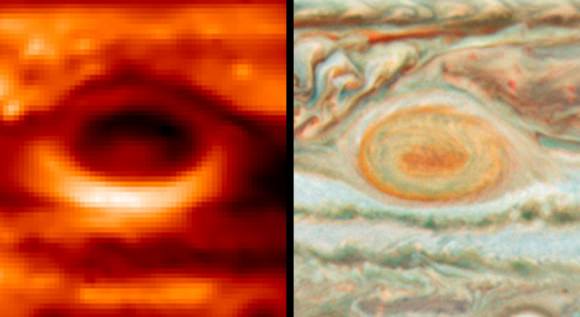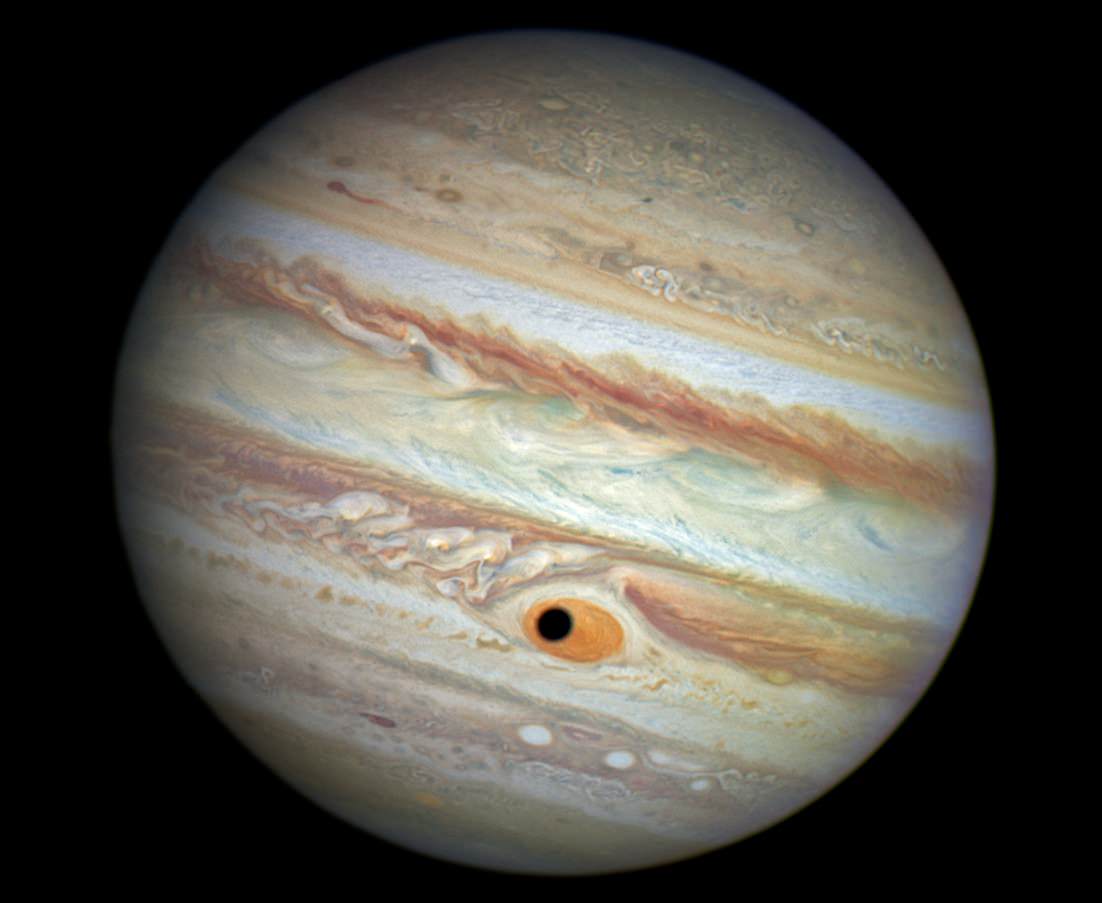Halloween is just around the corner. And in what appears to be an act of cosmic convergence, Hubble captured a spooky image of Jupiter staring back at us with a cyclops eye!
While this is merely a convenient illusion caused by the passage of Ganymede in front of Jupiter – something it does on a regular basis – the timing and appearance are perfect.
The above image, however, was captured by the Hubble Space Telescope on April 21st, 2014, when kids were perhaps thinking of the Easter Bunny, not monsters and goblins. At the time, Hubble was being used to monitor changes in Jupiter’s immense Great Red Spot (GRS) storm.
During the exposures, the shadow of the Jovian moon Ganymede swept across the center of the GRS, giving the giant planet the uncanny appearance of having a pupil in the center of its 16,000 km-diameter (10,000-mile) “eye.”
The conjunction was so perfect, scientists at the NASA Goddard Space Flight Center claimed that “For a moment, Jupiter ‘stared’ back at Hubble like a one-eyed giant Cyclops.”

First observed by Italian astronomer Gian Domenico Cassini in 1665, the GRS is a massive anticyclonic storm that lies 22° south of Jupiter’s equator and is believed to have a lifetime of 300 to 400 years.
The storm has apparently been shrinking over the past few decades – to the point that astronomers believe that it could become circular by the year 2040 and even disappear altogether someday.
Nevertheless, its existence continues to fascinate and inspire. And as the above image demonstrates, it can still catch us by surprise!
The above image was one of several natural-color pictures taken by Hubble’s Wide Field Camera 3.
Further Reading: HubbleSite


It’s so awesome our species has active eyes (with longevity, no less) elsewhere in the Solar System!
All these days I’ve been underestimating the size of the shadows on Big J. However, I can’t help but wonder if the shadow in the latest Hubble pic hasn’t been exaggerated slightly for the effect.